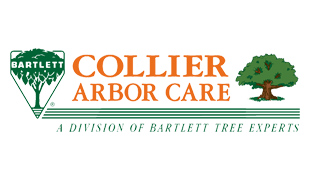 Terrill and son, Logan, team up to ride in the 2005 Tour
by Terrill Collier
Terrill and son, Logan, team up to ride in the 2005 Tour
by Terrill Collier
I and my son, Logan Collier, participated in the Tour des Trees, the tree care industry fundraiser, to raise money for tree research. We had 55 riders of all abilities, aging from 16 to 60 something and they came from all over North America to ride.
This year we rode our bicycles 450 miles from Jackson, Mississippi to Nashville, Tennessee along the beautiful and scenic Natchez Parkway. One month later Hurricane Katrina took essentially the same route we did destroying many of the beautiful trees we rode under. The tour took place the first week in August and we experienced temperatures of 95 degrees and 90% humidity.
This was my third Tour and the second for my 16-year old son, Logan, who was the youngest rider of the Tour. It was special riding with my son and having him give me encouraging words like “you’re getting older and slower, Dad” and “you’re going to have to train harder to keep up with me”. I sincerely want to thank all the people that supported us on our ride and for supporting the TREE Fund.
|
|
Ray Collier
Apr 14, 1909 – Sep 7, 2005
Born in Chandler, Oklahoma in 1909, Ray Collier moved to Portland, Oregon in 1935 and started what’s now known as Collier Arbor Care in 1937 pioneering new methods of tree and shrub care. His motto was always “Work smarter, not harder.”
|
 |
 Ray pruning a tree circa 1970
Ray pruning a tree circa 1970
 Founder, Ray Collier (left) and son, Terrill
Founder, Ray Collier (left) and son, Terrill
 Roger Hedges, Dusty Marchello, Terrill Collier
Roger Hedges, Dusty Marchello, Terrill Collier
 Climber and Certified Arborist Dusty Marchello removes trunk in chunks
Climber and Certified Arborist Dusty Marchello removes trunk in chunks
By Chris Ritschard, G.M., Collier Arbor Care
The first time I met Ray Collier, I was a young teenager. While watching a high school baseball game with my family in which both my brother and Ray’s son, Terrill, were playing, he came over and handed us a blanket to stay warm. Two years later I received a call from Mr. Collier asking me if I would work for him on a large temporary job. Of course I said yes, and found we were working at Tektronix treating their large native oaks. We started very early in the morning because Mr. Collier told us the wind was more calm, which I have passed down to our crews. He taught me to work hard and after a long hard day, he would always stop on the way home and buy me an ice cream cone.
The following year I went to work for Collier Spray Service full time when school was out. While working with Mr. Collier, I learned the common names as well as the botanical names of many trees and plants. I was also taught the problems which could occur on each plant. One of my favorite quotes from Mr. Collier was, “to eliminate an insect, you have to think like one.” Another quote, which I’ll always remember is, “work smarter not harder.” Mr. Collier always made sure we had the proper equipment for the job.
By working with him in the field and learning from him, I passed the commercial pesticide licensing test when I was a senior in high school. During this time, when he was about 65 years old, he taught me how to prune trees. We started on his large fruit trees at his house and I found out that I was a little apprehensive about heights. Watching him climb from one tree to another without hitting the ground while being over 20 feet in the air, gave me the nerve to climb myself.
Mr. Collier was very good at customer relations. He had a wealth of knowledge about our industry
and he spent many hours educating our clients about their landscape problems.
If he did not know
the answer to a question or problem, he would research it and always call the client back with
his findings.
Mr. Collier was a true gentleman and treated his employees very well and respected our opinions. He inspired me to work in this industry and taught me how to work. I’ll never forget him and I wish I could have thanked him and let him know how he impacted my life. Mr. Collier will be missed but he will never be forgotten.
 top » top »
The Sourwood, native to eastern United States, is one of our finest flowering trees and has year-round interest in the landscape. The vivid colored autumn leaves of orange and scarlet is the distinguishing feature that most people remember. This graceful deciduous tree has a pyramidal shape, rounded crown and slightly drooping branches. It grows slowly to 15 to 30-feet tall so it can be planted in smaller yards. The leaves are long and narrow and a glossy green resembling peach leaves.

Sourwood decked out in its fall color

(left) White, bell-shaped flowers resemble
blooms of the andromeda (Pieris)
(right) Close-up of the long, slender leaves with blooms
The Sourwood blooms at an unusual time in mid-summer with pendulous terminal bouquets of white, bell-shaped flowers resembling andromeda (Pieris). The fragrant flowers open over an extended period of time of 3 weeks. In autumn the seed capsules extend downward and persist into the winter. Grow this tree in full sun or light shade for best flowering and fall color. It grows best in well drained and acid soils with a ph of 4 to 6. Its name, Sourwood, refers to the sour taste of the leaves. This tree does not compete well with lawns so keep grass from beneath its canopy.
By John Wykoff – White, Wykoff & Co.
When Hurricane Katrina hit the Gulf Coast in early September, Clackamas-based Collier Arbor Care sprang into action. Katrina came ashore in Louisiana on Tuesday and by Thursday, company President Terrill Collier and two of his crew leaders, Roger Hedges and Dusty Marchello, were in Tangipahoa Parish helping remove downed trees from houses. Marchello and Hedges are both climbers
and certified arborists. Terrill Collier is a Board Certified Master Arborist.
“Anyone who cleans up after Northwest wind storms like the one in 1995 has the expertise and rigging skills to be useful in the aftermath of a disaster like Katrina. We knew we could bring something to the table,” said Collier. He and his crew packed their climbing and rigging gear and newly purchased boxed chainsaws (required by the airline) and took off. Arriving at night, Collier saw people camped out in the airport. “Although we couldn’t see the damage, there was a definite refugee feel to the place,” he recalled Extent of Katrina's devastation was apparent the next day.
Power lines and trees were down everywhere blocking streets. It was 95 degrees and 95 percent humidity. There was no gasoline in the area for vehicles or for such power tools as chain saws. Cold drinks were hard to find because there was no ice. “I’ve never seen anything like it. We got gasoline in Baton Rouge because even if there had been any left at local stations, there was no electricity to pump it,” Collier said.
Collier’s reaction to the disaster was immediate because his wife Janet is from the area. Both the Parish sheriff and assistant fire chief are part of the family and were instrumental in integrating Collier's crew into rescue and relief efforts. Collier and his crew spent the first couple of days working with another relative, a building contractor, who was volunteering to fix the roofs for low income people in need to keep the rain out.
“Our specialty was in using our rigging skills to remove trees from houses without causing further damage to the home,” Collier said. Overall, Collier and his crew removed trees from 20 houses during their six day mission of mercy.
In terms of trees, Katrina was a classic, Collier said. “People think that all trees blow down in a storm of this magnitude. Ponchatoula lost about 10 to 20 percent of its trees while about 40 miles to
the east where another sister-in-law lives, they lost about 30 to 40 percent of their trees. Pines and certain oaks are the most vulnerable,” said Collier.
Describing the devastation he saw during a trip to New Orleans as “really ugly, it looked like a third world country,” Collier said he and his crew returned with a new appreciation for the destruction hurricane force winds can cause and for the “grit and determination” of the people in the community where they were working.“It will be some time before their lives can be rebuilt. But, I know they’ll get there,” he said.
 top » top »
As we approach late fall and go into winter, it is a perfect time to walk our landscapes and check out the trees in order to minimize and reduce any possible damage which may occur from upcoming winter storms.

Tree crown cleaned, deadwood and duplicate branches removed to improve structure and reduce wind-sail effect
What You Can Do?
- Learn to spot the eight warning signs of structural tree defects (If you don’t already have one, contact our office for a free copy of our flyer How to Recognize and Prevent Tree Hazards [links to "Tree Hazards" in Problems & Solutions]
- Inspect your trees regularly, and particularly during storm season, for warning signs
- Call a certified arborist from Collier Arbor Care to examine the tree for remedy or removal
- Remove anything (whether people, pets, or a picnic table) away from a potentially hazardous tree immediately
What a Collier Arbor Care Certified Arborist Can Do for You?
Depending on your tree care needs, a Collier Arborist might...
- Thin crown-thick trees by removing 10-20% of the branches and foliage to reduce weight and wind resistance
- Crown-clean trees to remove deadwood and hangers
- Remove large leaning trees with cracked soil and exposed root balls
- Remove or cable branches with v-crotches or weak branch attachments
- Evaluate trees with large cavities, structural problems, or extensive trunk or root decay and remove if deemed hazardous
- Recommend actions for long term tree care and health
Trees are alive. Their integrity and stability change over time. Inspect your trees regularly to ensure their longevity and health.
 top » top »
|
 Terrill and son, Logan, team up to ride in the 2005 Tour
Terrill and son, Logan, team up to ride in the 2005 Tour
 Ray pruning a tree circa 1970
Ray pruning a tree circa 1970
 Founder, Ray Collier (left) and son, Terrill
Founder, Ray Collier (left) and son, Terrill
 Roger Hedges, Dusty Marchello, Terrill Collier
Roger Hedges, Dusty Marchello, Terrill Collier
 Climber and Certified Arborist Dusty Marchello removes trunk in chunks
Climber and Certified Arborist Dusty Marchello removes trunk in chunks








 top »
top »

